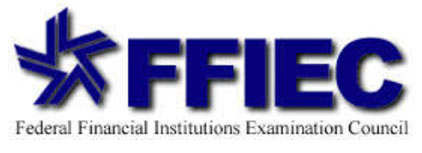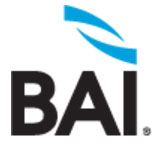Hardware News
Intel’s 13th-Gen “Raptor Lake” CPUs Are Official
Intel's 13th-generation Core CPUs, codenamed Raptor Lake, include: the Core i9-13900K, Core i7-13700K, and Core i5-13600K. Raptor Lake uses the hybrid architecture that Intel introduced in its 12th-generation Alder Lake chips last year—a combination of large performance cores (P-cores), plus clusters of smaller efficiency cores (E-cores) that use less power. Additionally, the amount of L2 cache per core has been nearly doubled, going from 1.25MB to 2MB per P-core and from 2MB to 4MB per E-core cluster.

~~~

Back to Top
Software Updates
10 Best Project Management Software
The author spent two months reviewing the best in project management software solutions. Here are his top ten: 1) monday.com Work OS; 2) Smartsheet; 3) ClickUp; 4) Teamwork; 5) Wrike; 6) Asana; 7) Airtable; 8) Zoho Projects; 9) Zenhub; and 10) Jira Work Management.

~~~
Back to Top
ATMs/Kiosks
Hyosung Rolls out 3 Cash Automation Solutions
Hyosung America has launched three banking solutions that deliver cash automation, including its Series 5 ATMs, Series 7 ATMs and MS500EL Teller Cash Recycler. The Series 5 includes the 5L Cash Dispenser model and the upcoming 5T thru-the-wall Cash Dispenser. The Series 7 includes the 7T thru-the-wall walk up, 7D thru -the-wall drive-up and 7I island drive-up. The series includes a five-high cash dispenser and CCIM Check and Cash Depositor. The MS500EL includes the MS500 high-counter and MS500S low-counter models.

~~~
Back to Top
Wireless World
Mobile Banking Apps Need Personalized Experiences to Hold Consumers
Tailoring mobile banking apps means not only customizing what consumers see on their screens but also how the software underneath it all adapts to what users need and the financial tasks they are performing. Personalization of app features is becoming the key to making an increasingly complex product work well. It encompasses many aspects of apps, and this article takes a deep dive into this topic.

~~~
Back to Top
Security Section
Cybersecurity: 2022 Cybersecurity Resource Guide for FIs
The Federal Financial Institutions Examination Council (FFIEC), on behalf of its members, has issued an update to the FFIEC Cybersecurity Resource Guide for Financial Institutions. The 2022 guide lists voluntary programs and actionable initiatives that are designed for or are available to help FIs meet their security control objectives and prepare to respond to cyber incidents.

Ransomware 3.0: The Next Frontier
We are in the early stages of the Ransomware 3.0 evolution, but some observers expect to see more pivots in the monetization model itself. Attackers are likely to revisit models from before the ransomware boom; they are already circling back to reselling stolen data instead of (and in addition to) extortion. They may offload dormant backdoors post-incident to resellers and jump on direct theft opportunities. They are already experimenting with several different cryptocurrency schemes including using victims' systems as mining farms and denial of service-enabled pump and dumps, and they are actively looking for more novel crypto-ransomware synergies.

5 Reasons to Use Cybersecurity Performance Management (CPM)
Cybersecurity Performance Management (CPM) is a framework that ties cybersecurity performance to an organization’s strategic cyber objectives, measuring meaningful Performance metrics – defined as Cybersecurity Performance Indicators (CPIs) – over time to ensure continuous monitoring of risk, compliance, maturity and ROI. It’s a data-driven approach to cybersecurity, leveraging existing tools that you already have to gain greater insight into your cybersecurity performance. In this article they cover 5 reasons why you should consider implementing CPM in your organization.

~~~
Back to Top
Technology and Marketing
What the Data-Driven FI of the Future Looks Like
This article posits that two main things inhibit the deliver highly personalized, targeted messaging and offers. One, the data housed in most FIs is often not easily shared within different parts of the organization. Two, today’s consumers and small businesses have financial relationships with more financial services providers than ever — many of them FinTechs — making secure and efficient data sharing increasingly a core competency. This article explores what the data-driven FI of the near future looks like, as well as some challenges that will need to be overcome.

~~~
Back to Top
Online Banking/E-Commerce/Website Design
The Many and Varied Benefits of Digital IDV
A robust identity verification program can provide FIs with secure access to identity data to deliver the digital banking experiences consumers demand. An IDV can also provide the means to locate, verify and approve more legitimate accountholders faster and with little to no friction. This article explores how data fuels IDV, and what are the primary benefits your FI can unlock by deploying a multilayered IDV solution.

Visa 'Stands to Lose the Most' from Fed's New Debit-Card Rules
The latest Fed update serves to clarify Regulation II of the Durbin amendment, which set forth the rule about alternative routing options in debit. Jefferies analyst Trevor Williams estimated that the rule could mean a roughly 3% negative earnings impact for Visa, though he thought Mastercard could see a negative earnings impact as well, of perhaps 2% on a per-share basis. The changes could mean “a 3% tailwind for FISV on STAR share gains,” he added in a note to clients.

Check Use Drops to All-Time Low for B2B Payments
Check usage continues to decline for business-to-business (B2B) payments in North America, falling to an all-time low of 33% since AFP began tracking this data in 2004, according to the 2022 AFP Digital Payments Survey. B2B check payments have dropped 9 percentage points in North America since 2019. This is consistent with the steady deadline in check usage reported by organizations over the past two decades. Since 2004, check usage has fallen by over 40 percentage points. Within North America, when paying major suppliers, the gap between paper and digital payments has widened to 13 percentage points, with 39 percent of organizations using ACH credits while 26 percent continue to use checks.

~~~
Back to Top
Digital Banking Industry Leaders Forum
Thought Leadership From Around the Industry by BANK tech-trends and Finopotamus:
Benchmarking Your Digital Banking Strategy
Humanizing Digital: Increasing Account Holder Loyalty and Exceeding Goals with Smart, Flexible Solutions
Digital Transformation: A Banking Imperative
Three Present-Day Goals to Revolutionize Your FI’s Marketing
eSignatures Are Now a Top Priority Across the Nation
Fight Fraud by Better Understanding Your Financial Data
It’s Always About the People: 5 Rules for Digital Banking and Beyond
Back to Top
Internet Access
Top 5 Best Practices for Cloud Security
Cloud security plays a key role in any organization's transition and journey to cloud, and it involves examining their data processing and storage practices to outline unique strategies for protecting data. These 5 best practices center on the idea that cloud users should familiarize themselves thoroughly with the services they’re purchasing and use the security resources made available by their cloud service provider: 1. Cloud security as a shared responsibility model; 2. Upskilling employees; 3. Implementing identity and access management; 4. Encrypting data in transit and at rest; and 5. Implementing intrusion prevention and intrusion detection.

Cisco, Microsoft Team to Route SD-WAN Traffic over Azure Backbone
Cisco and Microsoft have taken an existing SD-WAN partnership to the next level, collaborating to allow customers to sidestep the public internet and MPLS to send their Cisco SD-WAN traffic over the latter’s Azure cloud backbone. Dubbed Cisco SD-WAN Cloud Hub, the product allows customers which have deployed the company’s SD-WAN fabric to leverage unused Azure backbone capacity for site-to-site IP transit. Traffic routed this way essentially travels through an encrypted tunnel, ensuring end-to-end security.

Aryaka Delivers Zero-Trust WAN Based on Unified SASE Architecture
Aryaka announced the next evolution of its Zero Trust WAN with the inclusion of Secure Web Gateway and Firewall-as-a-Service. Aryaka's Secure Web Gateway is a defense for Site-to-Internet and User-to-Internet traffic, helping to provide protection for Web and Internet-based attacks.

~~~
Back to Top
Call Centers
Work from Home vs. Hybrid?
The author posits that the strong call center employee preference for full WFH is probably driven by the fact that many roles are entry level, income is more limited (compared to many corporate or enterprise roles), coupled with the high effort and output level required of contact center employees. She predicts that employers that force contact center reps into the office every week or even monthly will likely lose people to organizations that don’t make that requirement. She concludes that if maintaining a material in-office presence is a priority for your contact center, a solid solution may be to fill a certain amount of contact center roles with people that want to work FT in office and hire another group of home-based people who prefer that model.

~~~
Back to Top


















